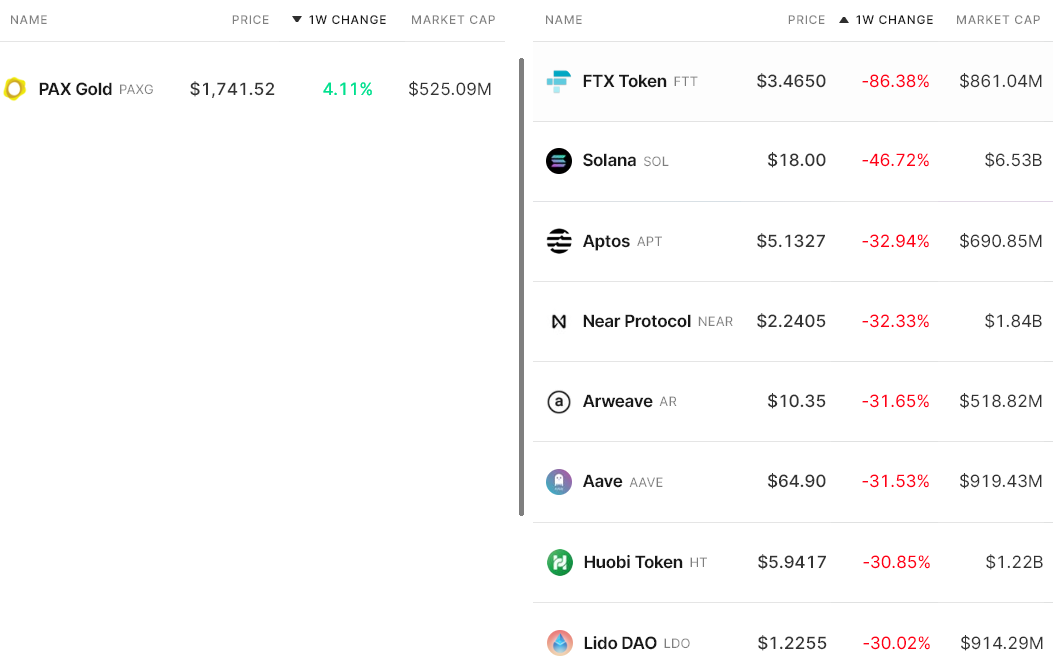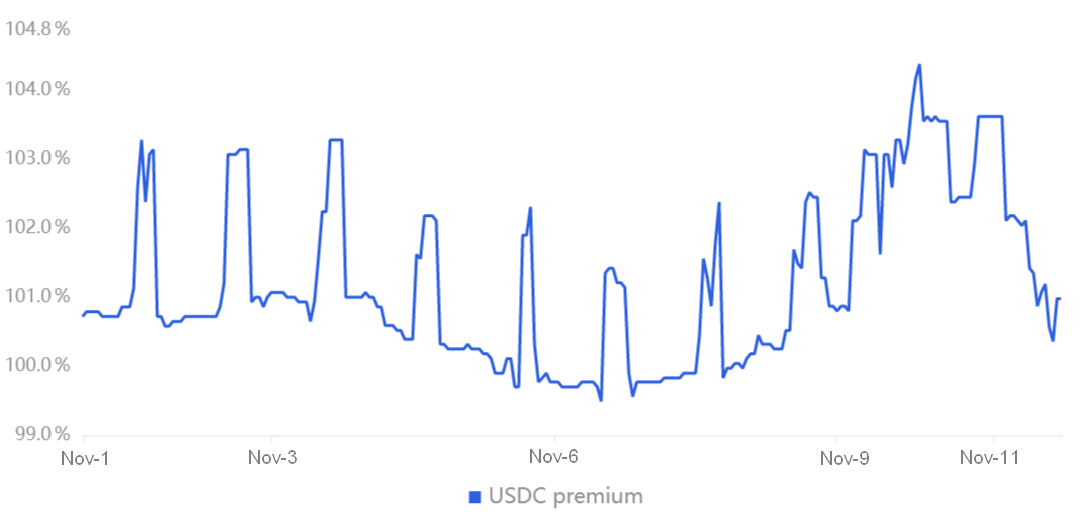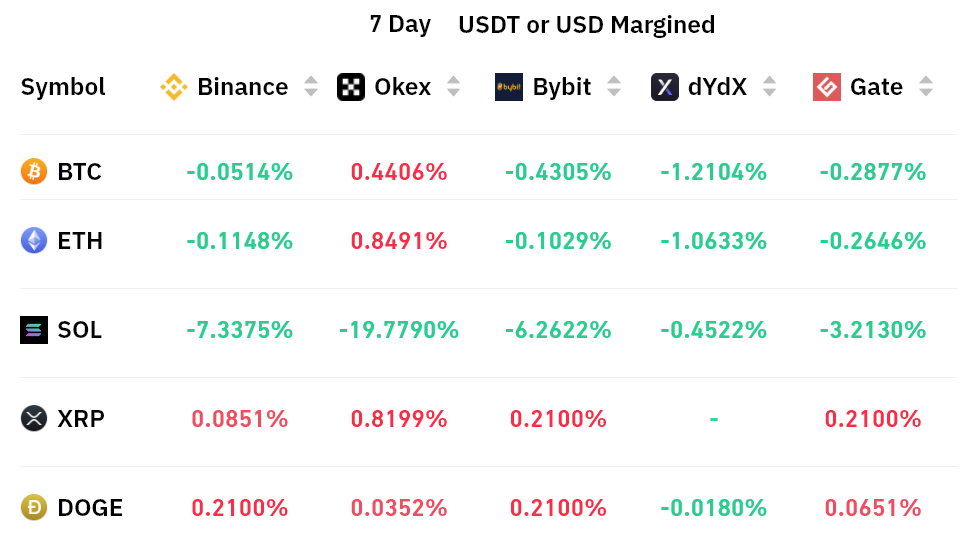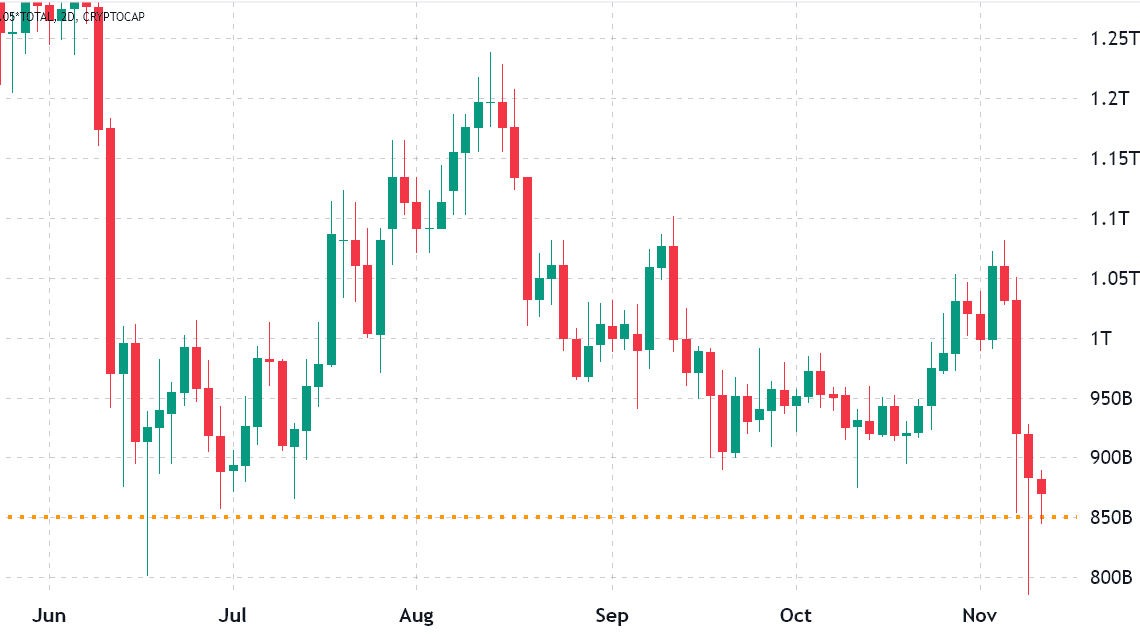The total cryptocurrency market capitalization dropped by 24% between Nov. 8 and Nov. 10, reaching a $770 billion low. However, after the initial panic was subdued and forced future contracts liquidations were no longer pressuring asset prices, a sharp 16% recovery followed.
This week’s dip was not the market’s first rodeo below the $850 billion market capitalization level, and a similar pattern emerged in June and July. In both cases, the support displayed strength, but the $770 billion intraday bottom on Nov. 9 was the lowest since December 2020.
The 17.6% weekly drop in total market capitalization was mostly impacted by Bitcoin’s (BTC) 18.3% loss and Ether’s (ETH) 22.6% negative price move. Still, the price impact was more severe on altcoins, with 8 of the top 80 coins losing 30% or more in the period.

FTX Token (FTT) and Solana (SOL) were severely impacted by liquidations following the insolvency of FTX exchange and Alameda Research.
Aptos (APT) dropped 33% despite denying rumors that Aptos Labs or Aptos Foundation treasuries were held by FTX.
Stablecoin demand remained neutral in Asia
The USD Coin (USDC) premium is a good gauge of China-based crypto retail trader demand. It measures the difference between China-based peer-to-peer trades and the United States dollar.
Excessive buying demand tends to pressure the indicator above fair value at 100% and during bearish markets, the stablecoin’s market offer is flooded, causing a 4% or higher discount.

Currently, the USDC premium stands at 100.8%, flat versus the previous week. Therefore, despite the 24% drop in total cryptocurrency market capitalization, no panic selling came from Asian retail investors.
However, this data should not be considered bullish, as the USDC buying pressure indicates traders seek shelter in stablecoins.
Few leverage buyers are using futures markets
Perpetual contracts, also known as inverse swaps, have an embedded rate usually charged every eight hours. Exchanges use this fee to avoid exchange risk imbalances.
A positive funding rate indicates that longs (buyers) demand more leverage. However, the opposite situation occurs when shorts (sellers) require additional leverage, causing the funding rate to turn negative.

As depicted above, the 7-day funding rate is…
Click Here to Read the Full Original Article at Cointelegraph.com News…
























